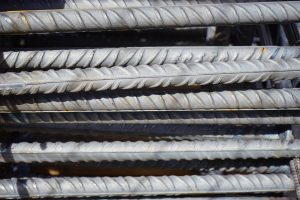
As shown in the image to the left, steel bars are long and relatively thin rods of steel. Also known as a reinforcing bar or simply “rebar,” they are frequently used in the construction industry to reinforce concrete structures. When concrete is poured, steel bars are added. Once the concrete sets and hardens, the steel bars increase the structure’s strength and integrity.
Although there are several techniques used to make steel bars, one of the most common is cold drawing. Like other drawing processes, cold drawing involves the use of physical force to stretch and manipulate metal. It’s unique, however, because of the additional steps it requires. To learn more about cold drawing and how it’s used to make steel bars, keep reading.
What is Cold Drawing?
Cold drawing is a drawing process that’s characterized by the use of physical force to stretch and manipulate metal. The difference between cold drawing and other drawing processes, however, is that cold drawing involves stretching the metal at or near room temperature. In comparison, hot drawing involves stretching heated metal.
The Steps to Making Steel Bars With Cold Drawing
To make steel bars with cold drawing, metalworking companies begin by submerging the raw steel in a lubricant. The purpose of the lubricant is to assist the steel bars in passing through the die. Without lubricant, the steel bars will encounter greater restriction, which may prevent them from passing through the die.
After the raw steel has been submerged in lubricant, metalworking companies process the lead ends so that they are smaller than the rest of the steel. The lead ends, of course, are the tips of the steel bars that travel through the die first. By making them smaller than the rest of the steel, metalworking companies can process the steel bars more easily in the die.
The next step involves the actual drawing process. As previously mentioned, cold drawing involves drawing steel at or near room temperature. The lead ends of the steel bars are forced through the die, which in turn stretches the steel to the desired length and width.
It’s important to note that steel bars may require several passes through the die. If a single pass doesn’t yield the desired length and width, the steel bars may be passed through die a second or third time. Each pass helps to manipulate the steel bars by stretching it. When finished, annealing is performed to further process and finalize the cold-drawn steel bars.
